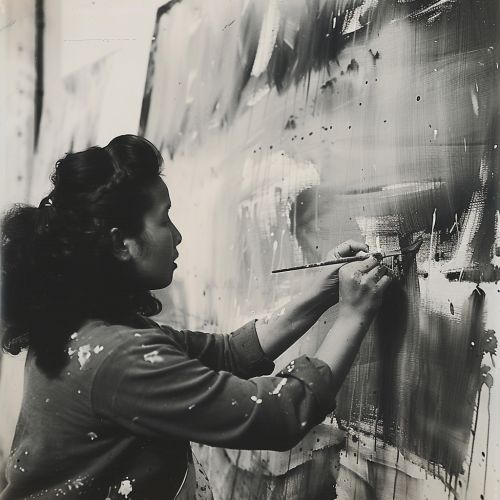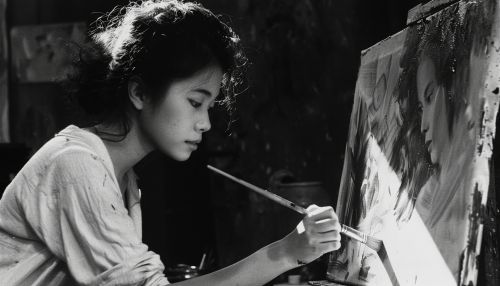Agnes Martin
Early Life
Agnes Bernice Martin was born on March 22, 1912, in Macklin, Saskatchewan, Canada. She was the third of four children born to Scottish Presbyterian farmers. Her family moved to Vancouver, British Columbia, in 1919, and she spent her early years in a rural setting. In 1931, she moved to the United States, where she would eventually become a naturalized citizen.
Education
Martin attended the Western Washington College of Education from 1935 to 1938, where she studied to become a teacher. She later attended the University of New Mexico (UNM) in Albuquerque, where she first encountered abstract expressionism and other modernist movements. She completed her B.A. in 1942 and her M.A. in 1952, both from UNM.


Career
Martin moved to New York City in 1957, where she became an integral part of the city's burgeoning art scene. She was particularly influenced by the work of Abstract Expressionists such as Mark Rothko and Barnett Newman. Martin's early work was characterized by biomorphic abstraction, but she gradually moved towards geometric abstraction, for which she is best known.
In 1967, Martin left New York and moved to New Mexico, where she lived in relative isolation. She did not produce any work for seven years, but in 1974, she returned to painting, producing a series of 30 acrylic paintings. Her later work is characterized by a focus on geometric patterns, particularly grids and stripes, and a restrained color palette.
Martin's work is often associated with minimalism, although she preferred to be referred to as an abstract expressionist. Her work is characterized by its simplicity and repetition, and she often used simple geometric shapes and lines in her compositions. Martin's work is also noted for its spiritual and transcendent qualities.
Legacy
Martin's work has had a significant impact on the world of contemporary art. She is often cited as a major influence by younger artists, and her work is held in high regard by critics and scholars. Despite her reclusive lifestyle, Martin's work has been widely exhibited and is held in the collections of major museums around the world.
Martin received numerous awards and honors during her lifetime, including the National Medal of Arts in 1998. She died in 2004 in Taos, New Mexico.
